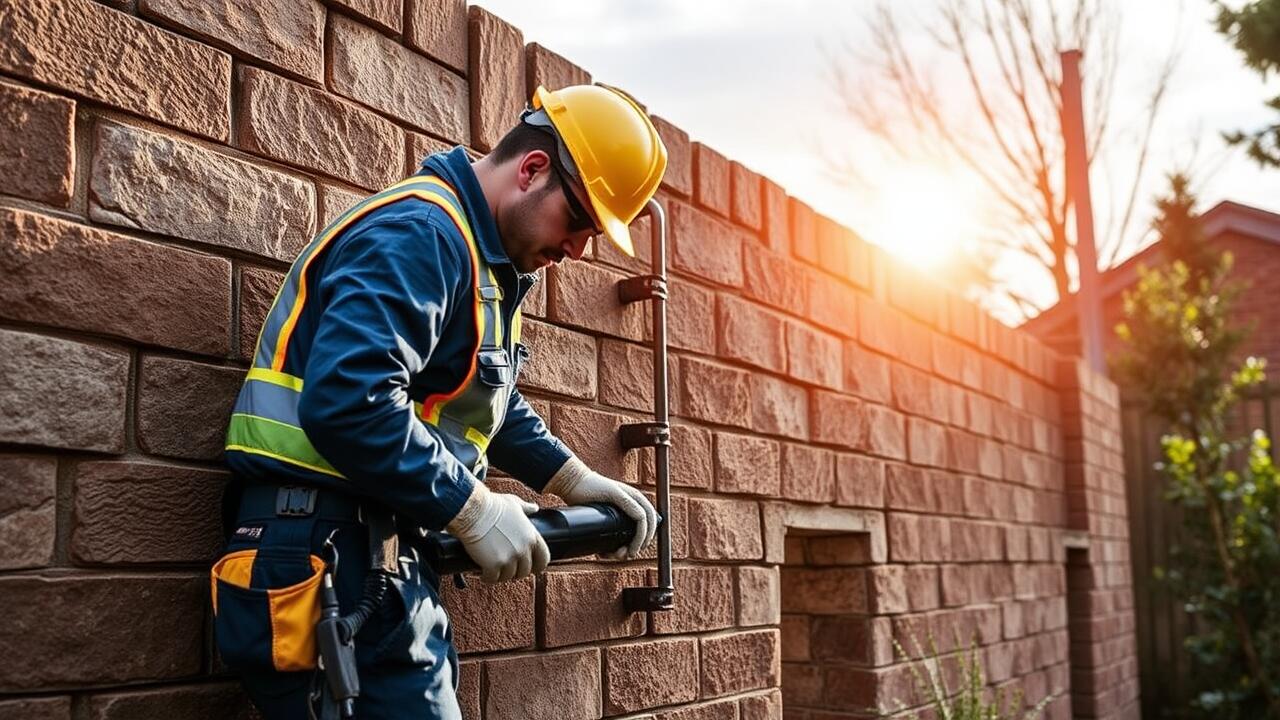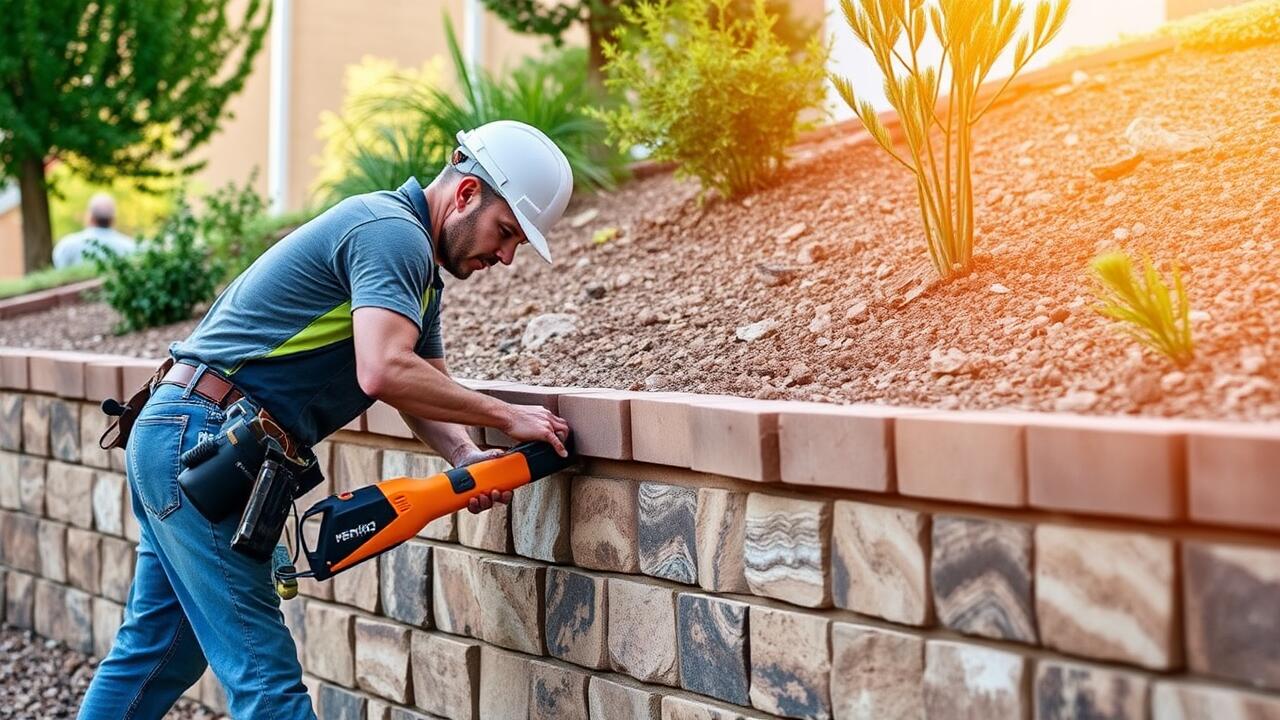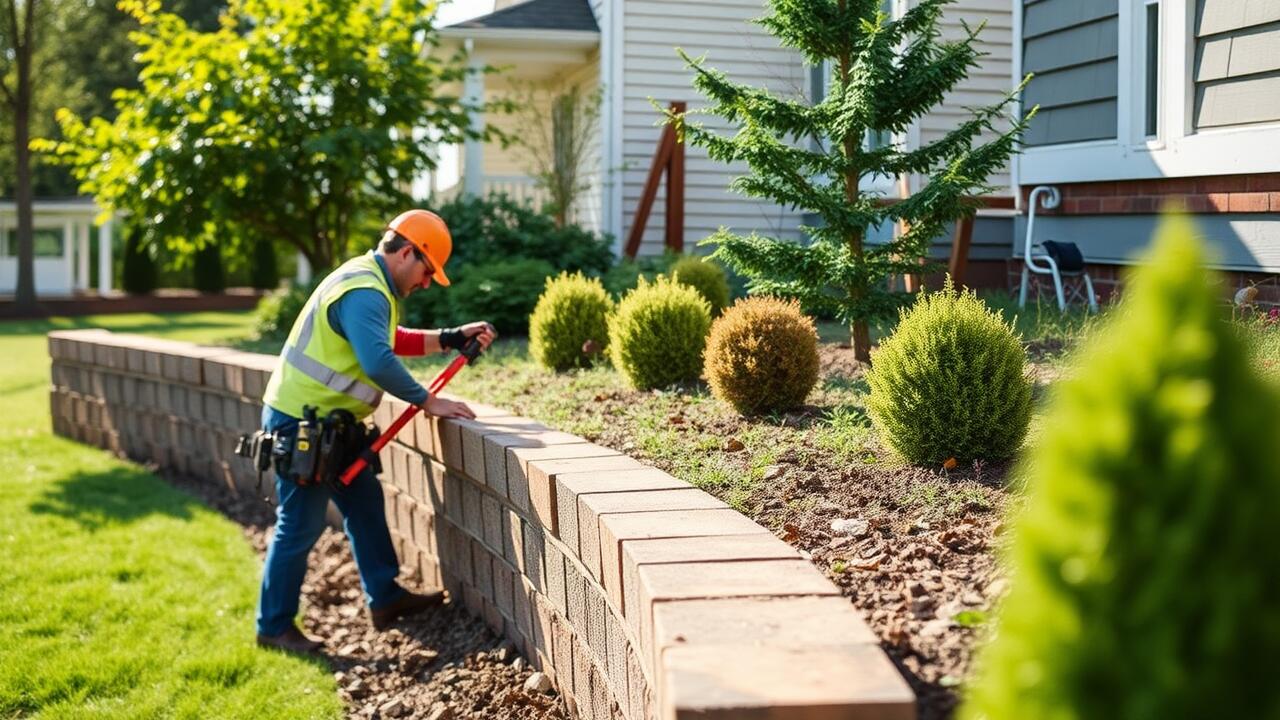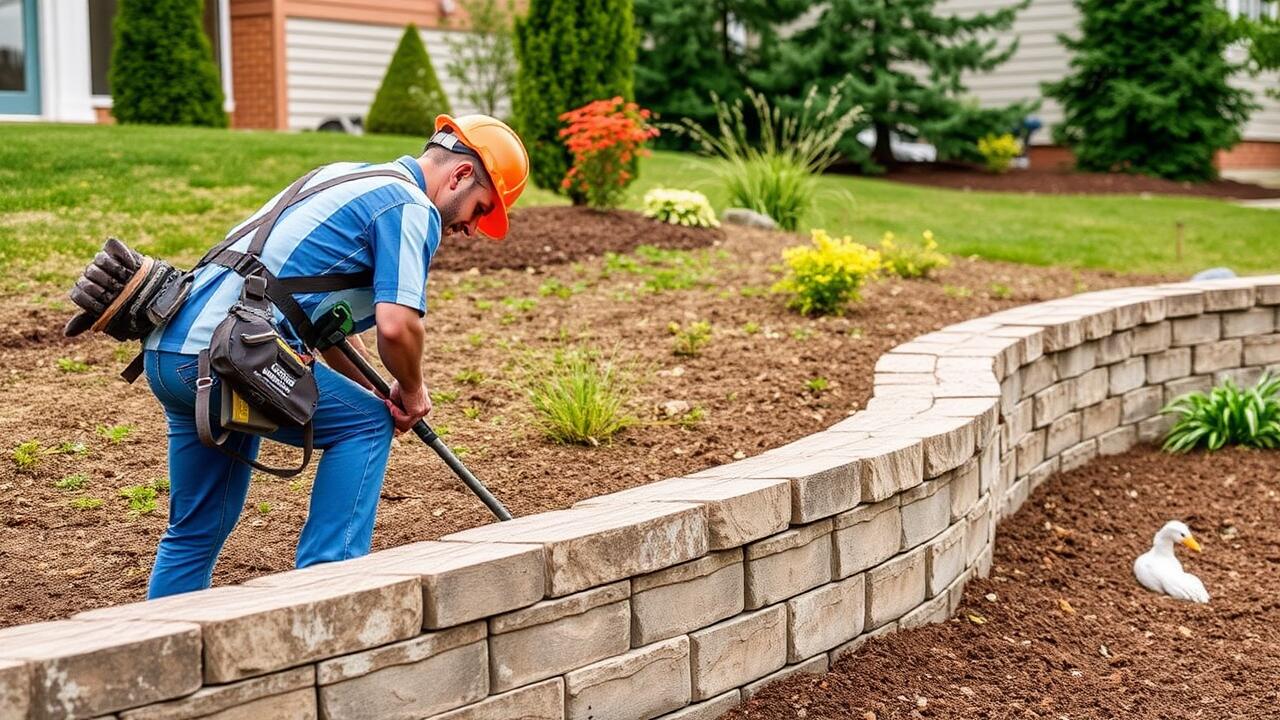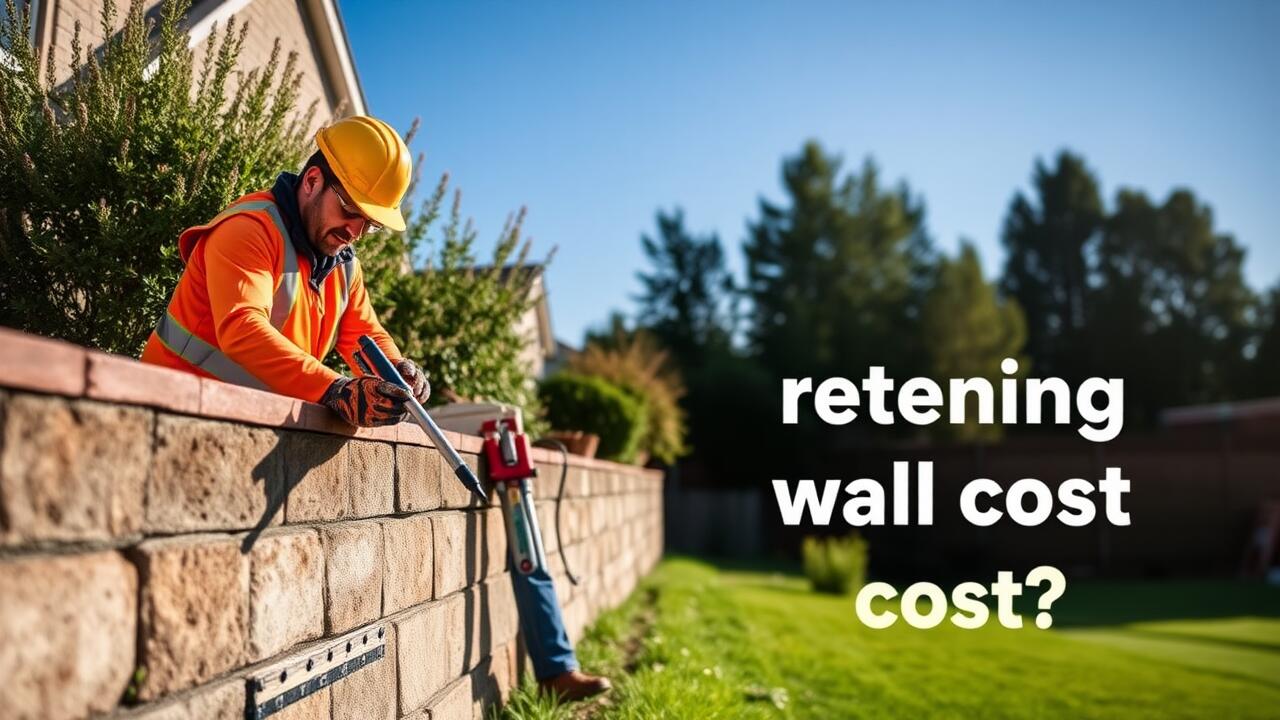
Engineering Considerations
When planning for Retaining Wall Installation, it is crucial to assess the specific engineering requirements based on the soil type, slope stability, and potential hydrological impacts. Soil characteristics, such as cohesion and compaction, play a significant role in determining how deep a wall should be set to properly handle lateral earth pressures. Engineers often conduct soil tests to gather data that informs the design process, ensuring that the wall can withstand the forces acting upon it without failing.
Another important consideration involves understanding drainage and its effect on the wall's performance. Proper drainage is necessary to prevent water from accumulating behind the wall, which can increase pressure and compromise its integrity. Incorporating drainage solutions, such as weep holes or drainage pipes, during retaining wall installation can mitigate these risks. Additionally, the design must account for potential hydrostatic pressure resulting from groundwater or rainfall.
Load-Bearing Capacity
The load-bearing capacity of a retaining wall is crucial in determining the necessary depth and construction materials. Soil type, moisture content, and the weight of the material behind the wall all play significant roles. Engineers assess these variables to ensure that the wall can withstand the lateral pressure exerted by the earth and any additional loads from structures, vehicles, or other influences. An accurate evaluation of these factors is essential during the Retaining Wall Installation process to prevent failures and ensure the stability of the wall over time.
Types of retaining walls differ in their ability to handle loads. Gravity walls rely on their weight for stability, while cantilevered walls use a leverage system to resist pressure. Reinforced walls, often made from concrete, incorporate additional support to increase load-bearing capacity. Choosing the right type considering specific site conditions is a part of effective planning. During Retaining Wall Installation, attention to load-bearing capacity will ultimately influence the longevity and functionality of the structure.
Design Options and Materials
When considering design options for retaining walls, it is essential to explore various materials that can meet your needs. Concrete, timber, and stone are popular choices, each offering different aesthetics and structural benefits. Concrete provides excellent durability and flexibility in design, while timber offers a more natural appearance. Stone walls can enhance a landscape's visual appeal but may require more labor-intensive installation. The chosen material will impact not only the wall’s appearance but also its overall functionality.
Retaining Wall Installation involves careful consideration of these factors in conjunction with local regulations and site conditions. Proper drainage solutions must accompany the design to prevent water accumulation, which could compromise the structure. Additionally, the installation process may differ based on the material selected. Understanding these intricacies helps ensure a successful outcome that addresses both practical needs and aesthetic preferences in any landscaping project.
Choosing the Right Structure
When considering the right structure for a retaining wall, various factors come into play. The choice of materials can significantly affect the wall's durability and resistance to the loads it will encounter. Concrete blocks, timber, and natural stone are popular options, each offering distinct advantages and disadvantages. The selection should take into account not only aesthetic preferences but also the specific site conditions and soil type. Understanding these elements is crucial during the planning phase, as they influence the wall's overall effectiveness and lifespan.
Retaining wall installation entails careful consideration of the design to meet the anticipated load requirements. Engineers often recommend analyzing soil pressure, drainage systems, and potential erosion patterns before proceeding with construction. This thorough evaluation helps in selecting a design that ensures stability while accommodating future changes in ground conditions. Ultimately, the right structure promotes the longevity and functionality of the retaining wall, minimizing the risk of failure over time.
Common Myths
Many people assume that retaining walls are only necessary for steep slopes or elevated areas. While it is true that these structures are crucial in such scenarios, they also serve important functions in less dramatic landscapes. Soil erosion, drainage issues, and even aesthetic purposes can warrant the need for a retaining wall. Understanding the various conditions that might require retaining wall installation is essential, regardless of the slope's angle.
Another common myth is that deeper retaining walls automatically provide better support. The truth is that soil type, consistency, and water drainage play significant roles in determining how deep a retaining wall needs to be. Simply digging deeper without considering these factors might lead to ineffective support and increased costs. Proper assessment and planning are vital for successful retaining wall installation, ensuring the structure meets the specific needs of the site.
Misconceptions About Depth
Many people hold misconceptions about the necessary depth for a retaining wall. It's often assumed that deeper installations always provide better support and stability. However, the effectiveness of a retaining wall greatly depends on various factors, including soil type, slope, and the wall's design. While increased depth can be beneficial in some cases, it is not the sole determinant of a wall's efficacy.
Another common myth is that a retaining wall must be buried deep into the ground to function correctly. In reality, the need for depth is contingent on the specific site conditions and the materials used. During retaining wall installation, the balance between depth, height, and structural integrity is essential for long-lasting performance. Proper planning and calculations should take precedence over general assumptions about how deep a wall needs to be.
FAQS
What is a retaining wall?
A retaining wall is a structure designed to hold back soil and prevent erosion or collapse, typically used in areas with significant elevation changes.
At what depth is a retaining wall necessary?
A retaining wall is generally necessary when there is a change in elevation of more than 2 to 3 feet, although this can vary based on soil conditions and the intended use of the land.
What factors influence the need for a retaining wall?
Factors include the slope of the land, soil type, water drainage patterns, and the load-bearing capacity required for the area, which can affect the wall's design and depth.
What materials are commonly used for retaining walls?
Common materials include concrete, stone, brick, timber, and metal, with the choice depending on factors like aesthetics, cost, and the specific requirements of the site.
Are there any myths about the depth of retaining walls?
Yes, a common misconception is that deeper walls are always better; however, the wall's design should be based on the specific conditions of the site rather than just depth alone.
